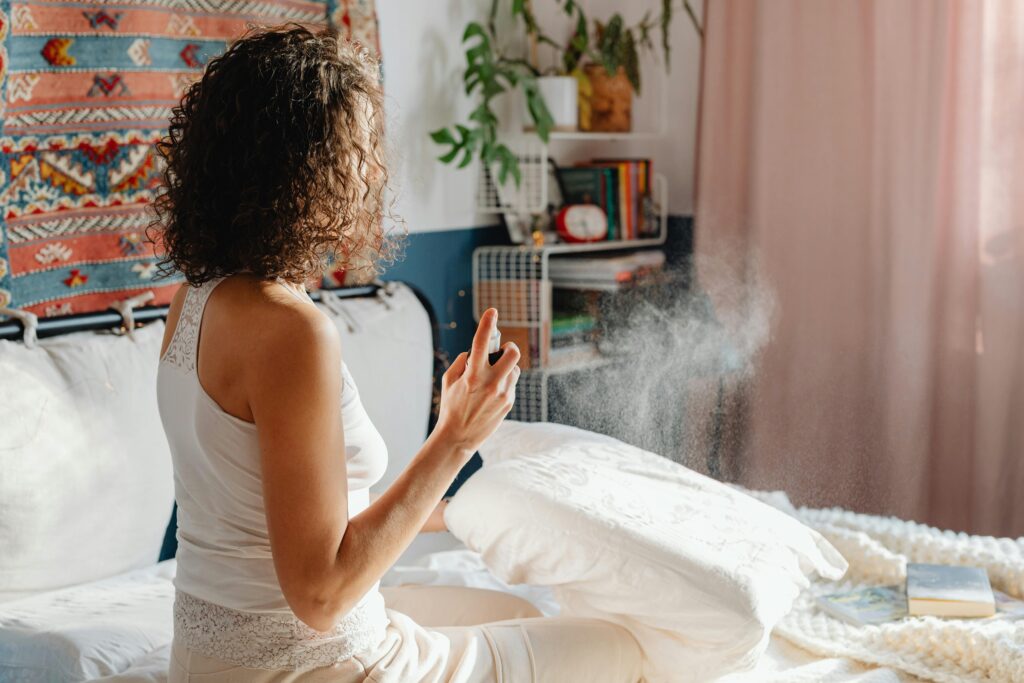A self-care sanctuary is a dedicated space in your home designed to promote relaxation, rejuvenation, and overall well-being. In our busy lives, it’s crucial to have a personal retreat where you can unwind and focus on yourself. This guide will help you create a soothing environment that nurtures your body and mind.
Choose the Right Space
Finding the right space for your sanctuary is the first step. Look for an area in your home that feels calm and peaceful. This could be a corner of your bedroom, a quiet nook in your living room, or even a small outdoor area.
Consider Natural Light
Natural light can greatly enhance the ambiance of your sanctuary. If possible, choose a space with a window that lets in plenty of sunlight. Natural light can boost your mood and create a warm, inviting atmosphere.
Declutter and Organize
A cluttered space can lead to a cluttered mind. Start by decluttering your chosen area. Remove items that you don’t need and organize your belongings. A clean and organized space promotes a sense of calm.
Use Storage Solutions
Incorporate storage solutions to keep your sanctuary tidy. Baskets, shelves, and drawers can help keep everything in its place. This not only improves aesthetics but also makes it easier to relax without distractions.
Incorporate Comfort
Comfort is key when creating your self-care sanctuary. Add cozy elements that make you feel relaxed.
Choose Soft Furnishings
Consider incorporating soft cushions, blankets, and rugs. These materials add warmth and comfort, making the space inviting. Choose textures that feel good against your skin, enhancing your overall experience.
Add a Comfortable Chair or Mat
If you have space, include a comfortable chair or mat for lounging. This will give you a designated spot to unwind, read, or meditate.
Create a Calming Atmosphere
The atmosphere of your sanctuary is essential for promoting relaxation. There are several ways to create a calming environment.
Use Calming Colors
Choose a color palette that soothes you. Soft blues, greens, and neutral tones are often calming. Paint the walls or add accessories in these shades to foster a peaceful vibe.
Incorporate Natural Elements
Bring the outdoors inside by adding plants or flowers. Indoor plants not only purify the air but also enhance the aesthetic of your sanctuary. Consider low-maintenance plants like succulents or snake plants.
Use Lighting Wisely
Lighting plays a significant role in setting the mood. Soft, warm lighting is more relaxing than harsh overhead lights. Consider using floor lamps, fairy lights, or candles to create a gentle glow.
Personalize Your Space
Your sanctuary should reflect your personality and preferences.
Display Meaningful Items
Incorporate items that bring you joy, such as photographs, artwork, or souvenirs from travels. These personal touches can evoke positive feelings and memories.
Create a Relaxation Station
Set up a relaxation station with items that promote self-care. This could include essential oils, a diffuser, candles, or a small bookshelf with your favorite reads. Having these items on hand encourages you to use the space regularly.
Incorporate Sensory Elements
Engaging your senses can enhance your self-care experience.
Use Aromatherapy
Aromatherapy can transform your sanctuary. Use essential oils or scented candles to create a calming atmosphere. Scents like lavender and chamomile are known for their relaxing properties.
Play Soft Music or Nature Sounds
Sound can greatly influence your mood. Create a playlist of soothing music or nature sounds to play while you relax. This background noise can drown out distractions and create a tranquil environment.
Establish a Routine
Creating a routine around your self-care sanctuary can help you maximize its benefits.
Schedule Time for Yourself
Set aside dedicated time each week to retreat to your sanctuary. Treat this time as a priority, just like any other appointment. This commitment helps establish a habit of self-care.
Engage in Relaxation Activities
Use your sanctuary for activities that promote relaxation. This could include meditation, yoga, reading, or journaling. Engaging in these practices regularly reinforces the purpose of your sanctuary.
Conclusion
Creating a self-care sanctuary in your home is a rewarding endeavor. It provides a dedicated space for relaxation and rejuvenation, promoting mental and physical well-being. By following these steps, you can cultivate an environment that nurtures your soul and encourages regular self-care.
FAQs
1. What should I include in my self-care sanctuary?
Include comfortable furnishings, calming colors, plants, personal items, and sensory elements like candles or essential oils.
2. How can I make my sanctuary more relaxing?
Incorporate soft lighting, calming scents, and soothing sounds. Declutter and organize the space to promote a sense of calm.
3. How often should I spend time in my sanctuary?
Aim to spend time in your sanctuary at least once a week. Treat this time as a personal appointment to prioritize self-care.
4. Can I create a self-care sanctuary in a small space?
Yes! Even a small nook can be transformed into a sanctuary. Use space-saving solutions and focus on essential elements to create a cozy atmosphere.
5. What activities can I do in my self-care sanctuary?
Engage in activities such as meditation, yoga, reading, journaling, or simply relaxing. Choose what resonates with you and promotes relaxation.



